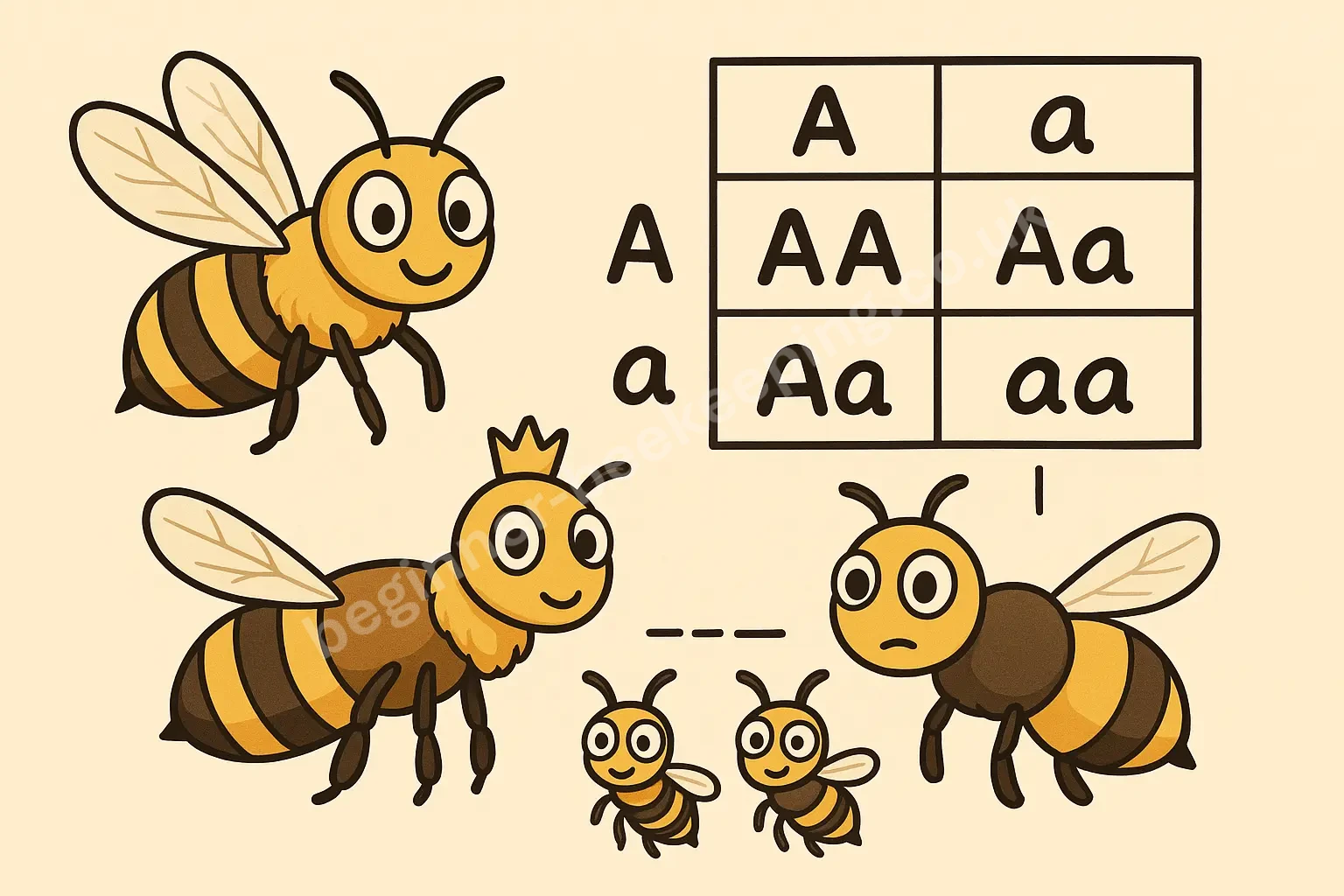So, you want to keep bees. Maybe you’ve got your first hive, or maybe you’re still dreaming about honey jars with your own label. You’ve probably heard a few things about “local bees,” “imports,” “hybrids,” and something called “Apis mellifera mellifera.” But what does it all mean? And why should you care?
Welcome to your crash course in honey bee genetics – in plain English.
1. What Is Bee Genetics?
Just like people, bees inherit traits (like colour, size, temperament) from their parents – the queen and the drones. These traits are passed down in their genes, which are like instruction manuals written inside every bee.
If you breed bees with certain traits – like gentleness or strong honey production – those traits can be passed on. This is how selective breeding works. But it’s also where things get messy…
2. Meet Apis mellifera mellifera (AMM) – Your Local Bee
AMM (also known as the European Dark Bee or “native black bee”) is the honey bee that evolved naturally in the UK and Ireland. It’s perfectly suited to our unpredictable weather and flowers.
It’s thrifty with its energy, survives wet summers, and winters well. That’s because it’s locally adapted – it’s evolved over thousands of years to fit our environment.
Think of AMM like a pair of sturdy wellies – not flashy, but perfect for our climate.
3. The Problem with Imports
A lot of beekeepers import queens from places like Italy or Slovenia. These bees are from different subspecies, like Apis mellifera ligustica (Italian) or Apis mellifera carnica (Carniolan). They may be calm or productive – in their home climates. But here?
Imported bees:
- Start laying too early and get caught out by frost
- Don’t handle our cool, wet springs well
- Can spread diseases (like Varroa-tolerant viruses or even new mites like Tropilaelaps)
Worse, when they mate with local bees, they cause genetic mixing (called introgression). This leads to a loss of the local adaptations in our native bees – making them weaker, more confused, and less able to cope with local challenges.
4. What’s the Big Deal with Hybrids?
Hybrid bees are like mixing two very different recipes – say, Italian pasta and British stew. Sometimes you get something okay. But often, it’s a mess.
Beekeepers in the past (like Brother Adam of Buckfast Abbey) tried mixing bees from all over Europe to create a “super bee.” But modern science (and experience) shows it often backfires:
- Hybrid bees can have unstable traits – like being calm one generation, aggressive the next .
- They are more prone to outbreeding depression, where genetic mismatch causes reduced fitness.
Keeping bees sustainably means avoiding this mess and working with what nature has already perfected.
Inbreeding Risk Section
What Happens With Inbreeding?
If drones come from the same genetic line (e.g. same colony or related colonies), this can lead to:
- Matched mating – queen mates with related drones
- Diploid drones – usually killed at larval stage
- Brood failure – patchy brood pattern
- Colony collapse – reduced population and productivity
This is why genetic diversity is key in bee breeding.
5. Why Local Bees Win (Every Time)
When you let your bees adapt naturally to your area – and only breed from the best survivors – you get stronger bees over time.
Researchers like Tom Seeley call this Darwinian beekeeping – letting natural selection do the work.
Studies from Grace McCormack and the B4 Project show that wild and unmanaged colonies of AMM are more disease-resistant, more stable, and more sustainable than imports.
6. Can You Breed Bees Without Playing God?
Yes – and you should.
The trick is to:
- Observe which colonies do best in your area (survive winters, don’t swarm, gather honey).
- Breed from survivors – queens and drones.
- Avoid bringing in foreign genetics.
- Isolate your mating sites if possible.
- Work with others locally to protect genetic purity of AMM.
This approach is already working in places like Colonsay, Scotland, where bees are genetically pure and thriving – with no imports allowed.
7. How to Start
If you want to keep bees sustainably:
- Find local bees – Look for AMM breeders or local swarms.
- Join local groups – Groups like The B4 Project and Sustainable Honey Bees CiC promote native bee conservation.
- Learn from nature – Watch your bees, work with them, not against them.
- Resist the temptation to import – Cheap bees cost more in the long run.
Final Buzz
Honey bee genetics might sound intimidating, but it boils down to this:
Keep local. Breed from survivors. Don’t import trouble.
Your bees know what they’re doing. Give them a chance to show it – and in return, you’ll have healthier colonies, better honey yields, and stronger bees for the future.
Want to dig deeper? Start with:
- https://staincross-apiaries.co.uk/honey-bee-genetics
- The Honeybees of the British Isles by Beowulf Cooper
- Darwinian Beekeeping by Tom Seeley
- The B4 Project and Sustainable Honey Bees CiC
- Talks by Prof. Grace McCormack and Norman Carreck
